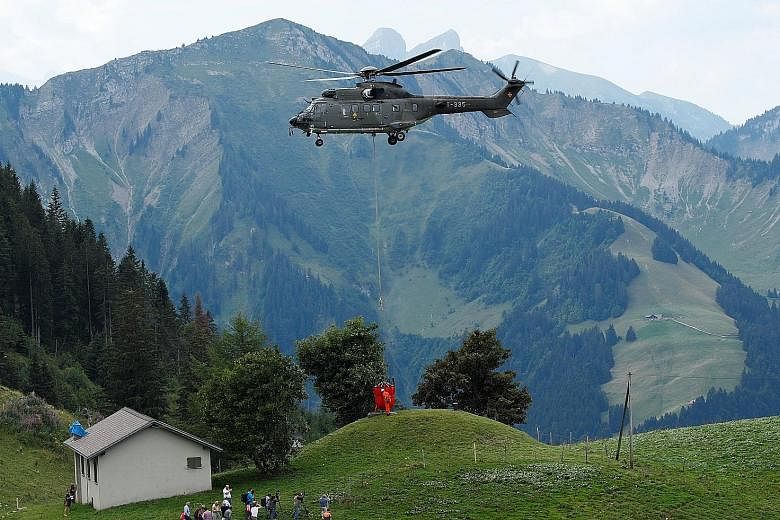PARIS • "Our cows have been living off hay cut in June, there isn't any grass," says French farmer Jean-Guillaume Hannequin who, like his counterparts across much of northern Europe, is wondering how he will feed his animals this winter.
Mediterranean countries long ago adapted their farming practices to little rain, but this year it is northern Europe that is confronting a widespread drought that could see farmers having to send most of their herds to slaughter due to a lack of feed.
In Sweden, where swathes of territory were burned by wildfires this summer as the country baked under century-high temperatures, the grain harvest is expected to be down by around 30 per cent and it is unclear whether recent cooler temperatures will allow farmers to take in more hay.
The situation is similar in Germany, where officials say one in 25 farms is at risk of going out of business. In Lower Saxony, a key region for growing fodder crops, the harvest is expected to be more than 40 per cent down from normal years.
In the Netherlands, the deficit for fodder is estimated to be 40 per cent to 60 per cent, according to the agricultural association, with the deficit for grain at 20 per cent.
The English countryside is far from its normal undulating green, having not seen a drought like this in 80 years, said the Agriculture and Horticulture Development Board (AHDB). Milk production is down sharply due to a lack of hay.
As prices for fodder and hay soar, farmers are sending animals to the slaughterhouse earlier than usual. In Britain, the number of cattle slaughtered jumped by 18 per cent last month, with dairy cows making up a large portion, said the AHDB.
In Germany, where the government has unlocked emergency aid for farmers, there was a 10 per cent increase in animals slaughtered in the first two weeks of July.
And the Swedish government has pledged 1.2 billion kronor (S$180 million) in aid for farmers to buy fodder and avoid sending their animals to the slaughterhouse.
Meanwhile, in Australia, another country hit by devastating drought, widespread rain fell across affected parts in the east over the weekend, bringing relief to farmers struggling to cope with the driest conditions in more than half a century.
The wet weather was the first that farmers in some areas had seen for more than a year, and even included hail. But locals cautioned that the ground had become so dry in recent months that more downpours over the next few weeks and months would be needed to make a difference.
The respite came as new Prime Minister Scott Morrison said he would make addressing the drought the top priority of his government.
AGENCE FRANCE-PRESSE

